Although there are some succulents that thrive outdoors year-round even in cold-winter climates, most must be protected from frost. With fall rapidly approaching, it’s time to consider caring for succulents in winter. This year, more than ever, make it a point to protect your succulents from winter’s chill and set them up to thrive indoors where you can enjoy them. If travel, socializing and parties are restricted, make sure your nest is cozy and full of succulents! Let’s take a close look at succulent care in winter. We’ll cover timing for bringing your succulents indoors for the winter and I have a checklist for preparing your succulents to winter indoors, so you and your plants are fully ready for the season ahead.
Preparing Succulents to Winter Indoors Checklist!
In this Post We'll Cover:
{Please note, some links in this post may be affiliate links to sites that pay me a small commission if you click on the link and make a purchase. This commission is at absolutely no cost to you. I only recommend products and companies that I have worked with and truly love! ~Kat}
Know Your Succulents

The first step of caring for succulents in winter is knowing your plants. Which of your succulents are winter hardy in your climate? Learn all about succulents and winter hardiness here. You must bring tender succulents indoors over the winter or risk losing them to frost damage. But do you want to bring in any hardy succulents, or leave them outdoors? This is really up to you. Unlike fruit trees, flowering shrubs or flower bulbs, succulents that can survive winter chill do not actually need to experience deep cold to thrive and reproduce.
But are you sure you know which of your succulents are hardy or even which you have? Proper winter care is one reason identifying your succulents is so important. I cover a number of resources to help you to identify your plants in my blog post. Or you can join my new Facebook group for succulent lovers! Members from all over the world will help you to identify your succulents.
When to Bring Succulents Indoors for Winter?
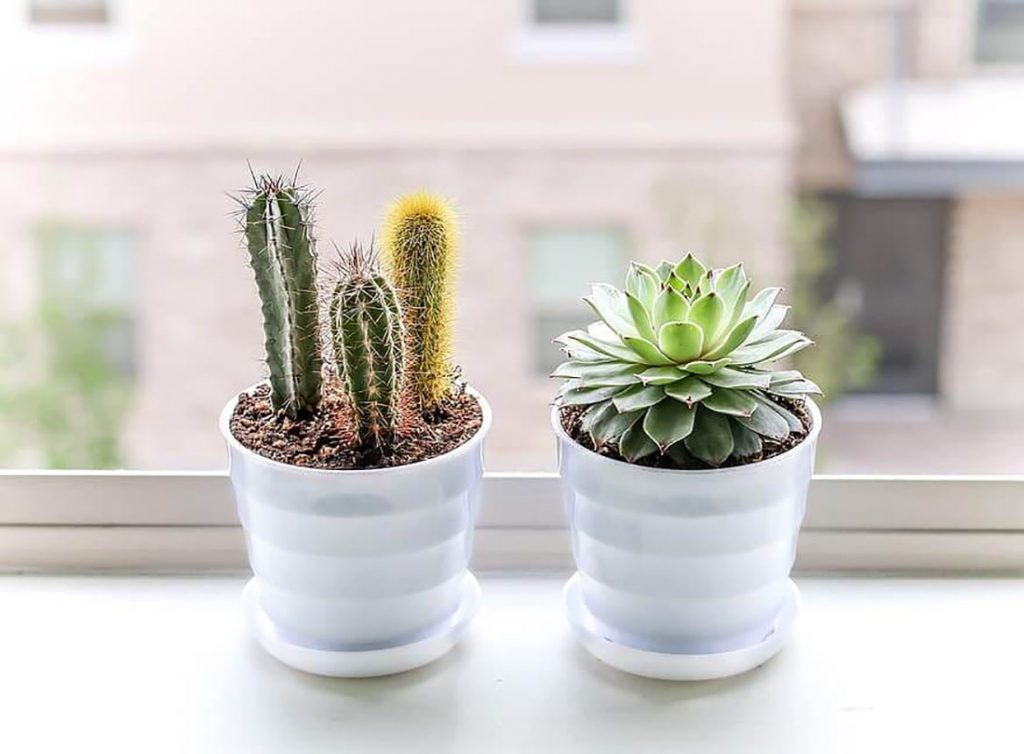
Most succulents do better growing outdoors than inside. Even those growing in the shade tend to flourish more in shade outdoors than in bright light indoors. So you don’t want to bring your plants indoors way too soon. Plan to bring your succulents indoors before the first frost. You can check with your local nursery or Google for the first frost date in your area. However, an early freeze will damage and possibly kill your succulents, so don’t cut the timing too close. Err on the side of caution and bringing them indoors early.
Succulents use less water when grown indoors than out, largely due to decreased airflow. So begin reducing the amount of water you provide them about three weeks prior to bringing them indoors. And do not feed your succulents within six weeks of bringing them indoors. You don’t want to stimulate faster growth while the plants are in the lower light available indoors.
Preparing Succulents for Winter Indoors
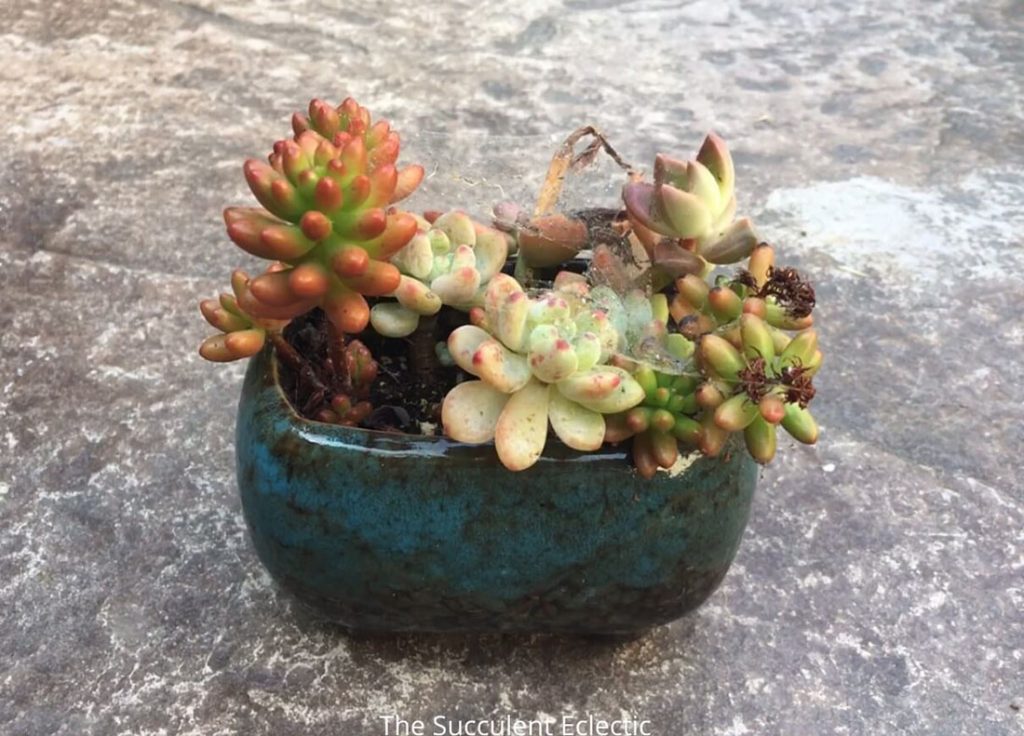
Preparing succulents for winter is a great time to clean up both potted plants and those growing in the ground. Before you move a pot of succulents indoors, it is important to take the following precautions:
Before bringing your succulents indoors for the winter:
- Wipe down the pot
- Check that drainage holes are clear and not blocked by roots
- Pot up succulents that need more space
- Clean the succulents of cobwebs and any debris
- Inspect closely for any signs of insects and spray any you find with isopropyl alcohol outside of direct sun
- Remove any dead plants or broken stems or leaves
- Fill any open spaces with new succulents or cuttings
- Spray the soil with isopropyl alcohol to kill any insect eggs
- Add a 1/4″ layer of worm castings on the soil
- Add a 1/3″ layer of an inorganic top dressing over the worm castings to keep it in place (do not mix the two)
- Check which succulents are toxic to pets, and adjust your placement as needed
Cleaning Succulents and Preparing for Indoors
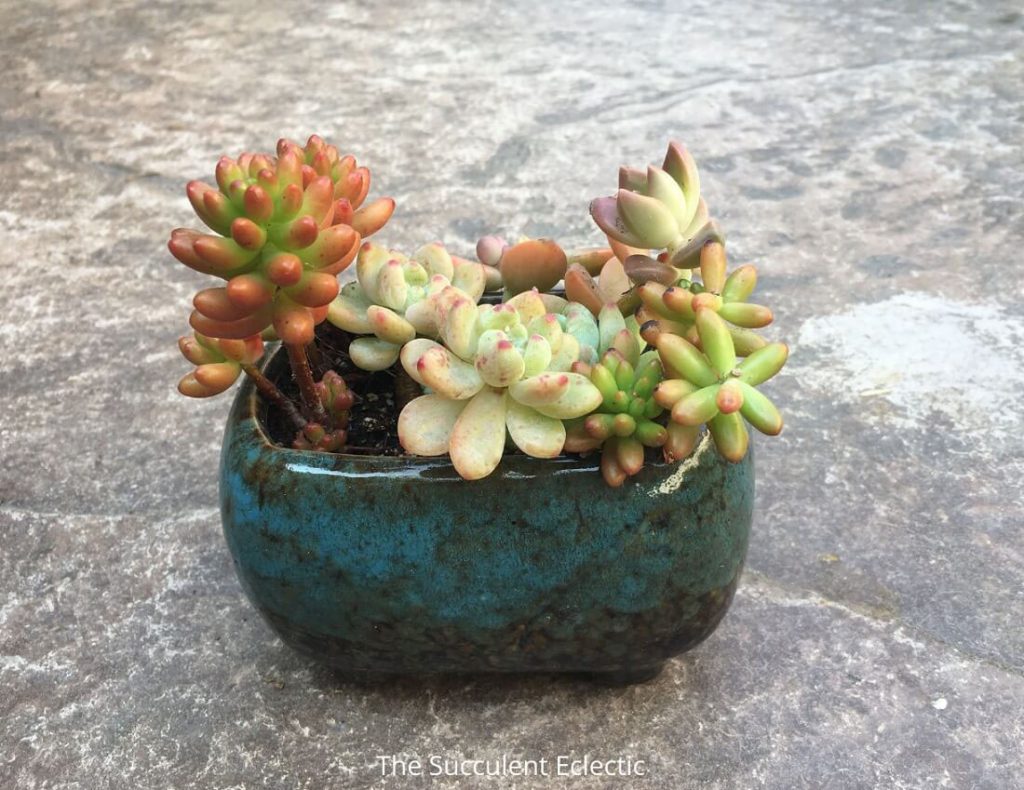
Indoors or out, the most effective step of pest control is prevention. Careful inspection for insects is an important part of succulent care in winter, especially before bringing your plants indoors. Check over the stems, leaves, between the leaves and the soil with care. if you discover insects or eggs, change out the soil, wash the old soil from the roots, and transplant the succulent. Clean up any cobwebs, fallen leaves, broken stems, spent blooms, etc. I find the soft brush and tweezers in my mini tool kit are perfect for the job. This is a great time to take cuttings from over-grown succulents or those with a broken stem. Remove any plants that have died. Pot up any that need a larger home. And be sure to check that the drainage holes are clear of roots, so the pot remains fast-draining. Spray the soil with 70% isopropyl alcohol as a preventative measure, just in case there are any insect eggs hiding near the soil’s surface.
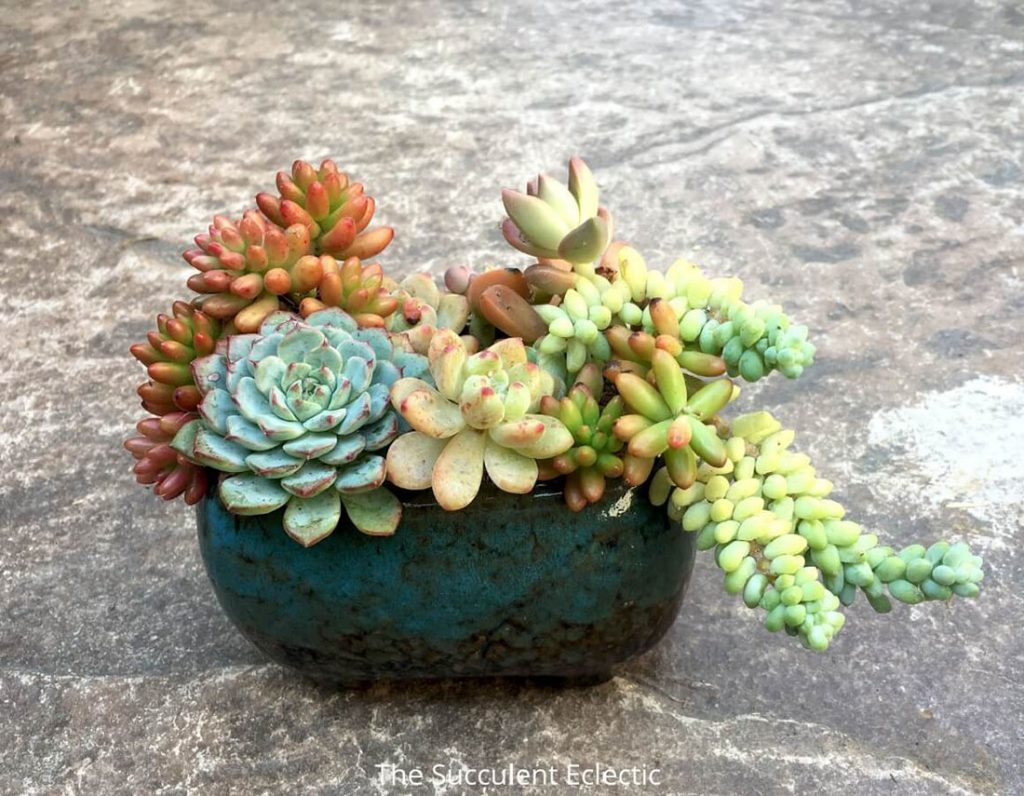
Refresh the potted succulents by planting new plants or cuttings in any bare spaces you want to fill. (Of course, you don’t have to plant this full, but I cover how to close plant succulents here.) When the pot and the plants are fully cleaned and ready, add a 1/4″ layer of worm castings on top of the soil. Worm castings make a terrific organic fertilizer. But the reason I include it as part of succulent care in winter is that worm castings repel pests. Worm castings are rich in chitinase, a natural enzyme that kills insects and protects your succulents.
An inorganic top dressing provides multiple benefits for your succulents. I include it in caring for succulents in winter because it further prevents any insects from laying their eggs in the soil of your plants. Worm castings and top dressing are the best way to ;protect any of your indoor plants from pests at any time of the year.
Watering Succulents Indoors
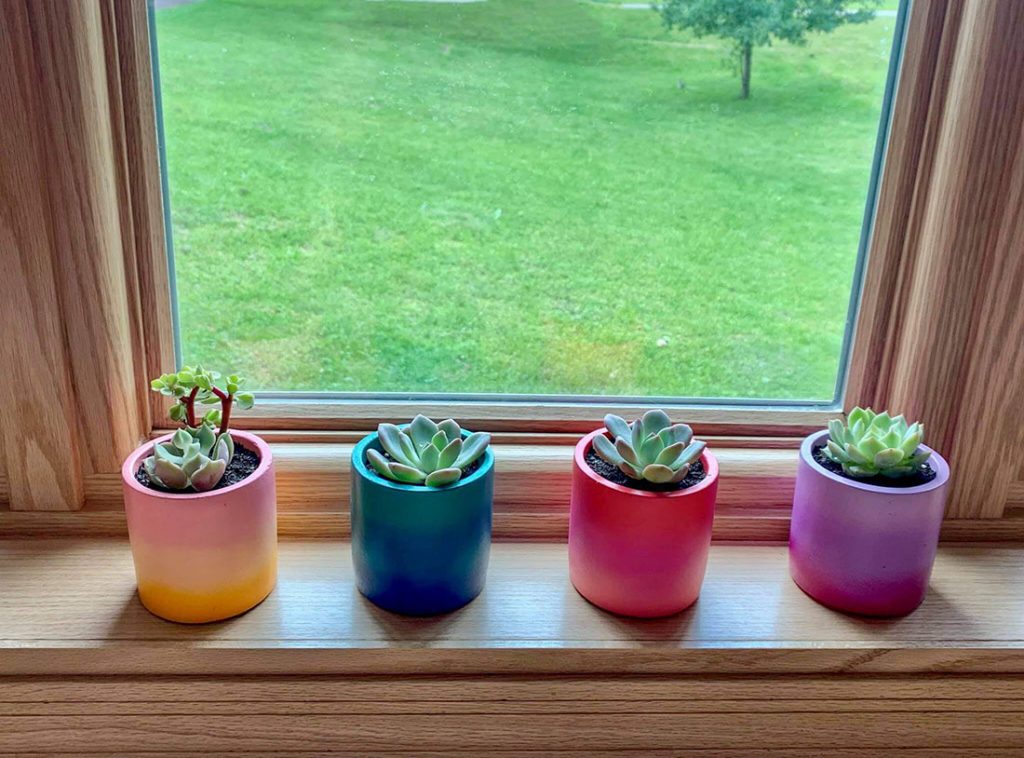
Proper watering is the most crucial part of succulent care in winter or any season, in containers or in the ground, indoors or out. The essence of watering succulents is to mimic the conditions of their natural habitat, which is typically long spells of drought, punctuated by drenching rains. All the fast-draining succulent soil to dry, then water thoroughly, till the water runs from the drainage holes. Do not allow the pot to remain in standing water or a wet catch tray. Continue this drench then drought cycle for happy, healthy succulents.
Indoors, your plants will process much less water than they do outside. Large temperature fluctuations from night to day and better airflow outdoors cause plants to lose a lot of moisture every day. So take great care to water indoor succulents according to their needs rather than on a strict schedule. You should notice that your succulents last much longer between waterings indoors than out.
Remember that some of your succulents may go dormant in winter, even while they are indoors. Those plants should be allowed to remain dry unless they show by wrinkling leaves that they are thirsty. Other varieties actively grow and even bloom in winter months. Caring for succulents in winter means giving each plant what it needs.
Lighting Succulents in Winter
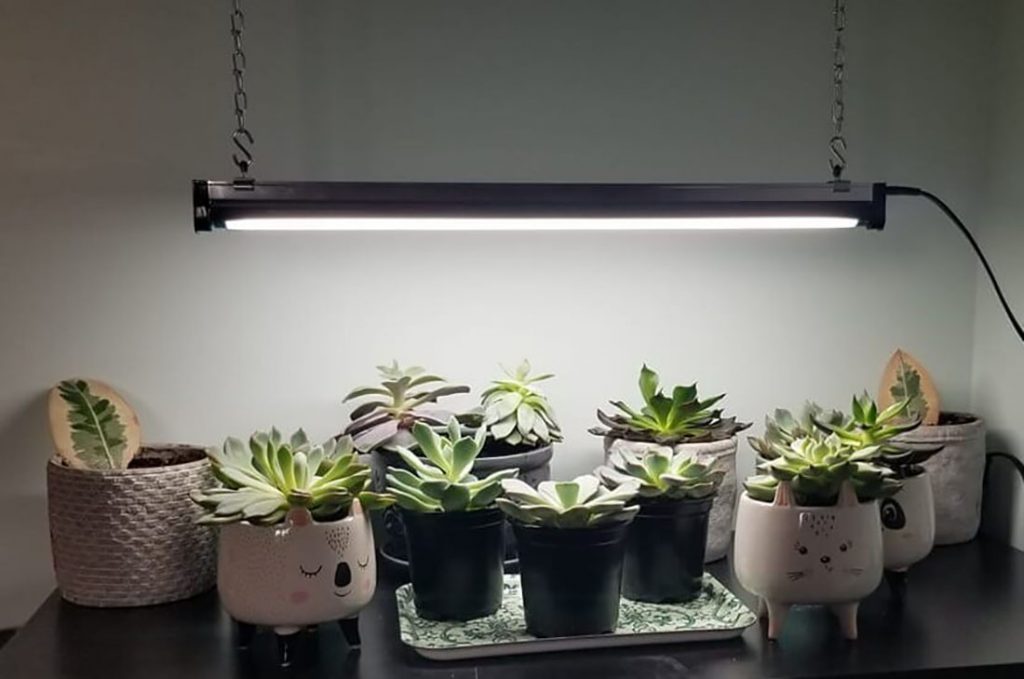
Indoor lighting is the most challenging part of caring for succulents in winter. Even if you have large, beautiful windows that let in a lot of light, winter means less sunshine to come in. Let’s be clear — you can grow all your succulents indoors without a grow light. It is absolutely doable! Those succulents that need a lot of light will etiolate and stretch, but unless you have something like Fenestraria, etiolation won’t kill them. You can simply cut them all back and root the stem cuttings and grow them on in the spring. You can also position a mirror or mirrored tiles to reflect the available light back to the plants, thereby increasing the light they receive.
I do not like urging you to spend money. But if ever there were a year that suggests investing in your nest and the hobbies you love is a great idea, 2020 is that year. Succulents in winter continue to grow. Without grow lights, your succulents will stretch, reaching for more light, so you’ll lose the natural shape of the plants. With grow lights, your succulents won’t lose time over the winter and will return to the outdoors in spring lush and full. Do your self (and your succulents) a favor, and invest in some good quality grow lights and fill your home with life and succulence this winter.
If you elect to buy grow lights, I have a detailed, but simple guide to succulent grow lights for you here. If you want to cut to the chase, my recommendation is to get either white LED lights or T5 lights for your succulents. Grow light technology has come so far, so fast, it is no longer worth the savings to buy the red/blue LEDs that are so hard on human eyes. Instead, get full-spectrum, white lights to keep your succulents healthy and happy. You can then enjoy them in your home without the painful, purple glare. And don’t try to get the smallest light you can — plan for your current collection to grow. It has so far, right? And a larger fixture with a brighter amount of light gives you more flexibility and options for your plants.
Plant Shelves
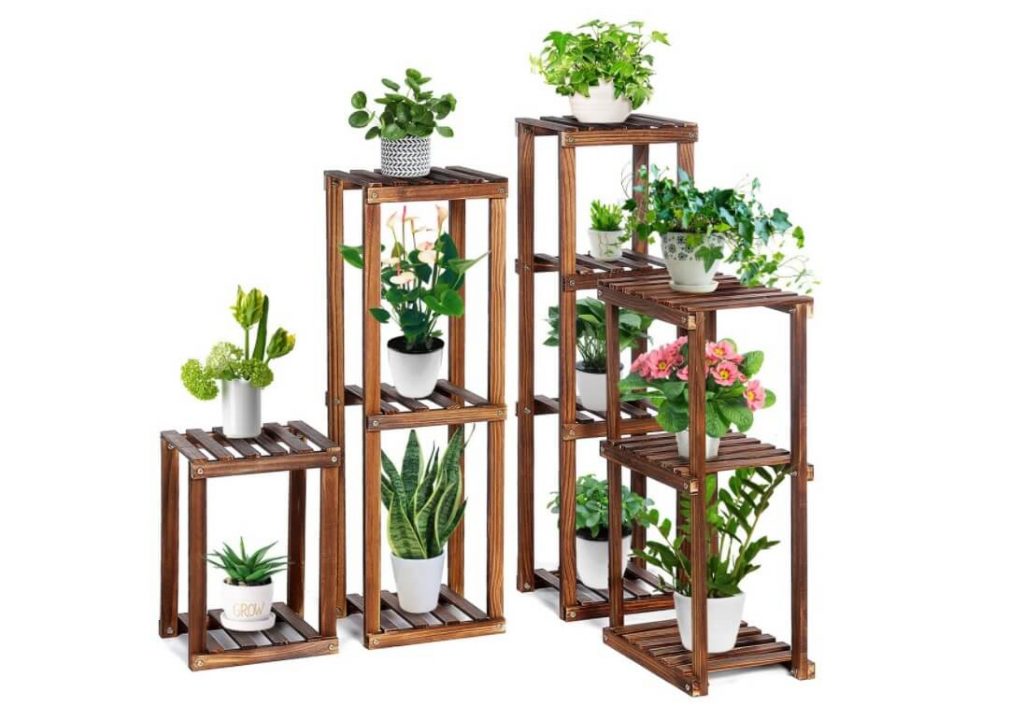
Plant shelves are a simple and attractive way to display your succulents indoors. They’re easy to put together, and you can take them down to store in the garage spring through fall. But shelves can also boost your succulent care in winter by providing infrastructure for grow lights to hang from. They also make an exceptional gift for the succulent-lover in your life!
And there you have it! You’re ready to start caring for succulents in winter when the temperatures drop in your climate. And, as I promised, below you’ll find the checklist for the succulents in winter prep before you bring them indoors. If you have any questions or comments, please take a moment to leave a comment and I will get right back to you!
’til next time, happy gardening!

For more succulent care information, subscribe to The Succulent Eclectic! I’ll send you my FREE e-course, 7 Steps to Succulent Success. Thanks!
P.P.S. Why not join my Facebook Group for succulent lovers? We talk about succulent care, propagation, succulent identification, and design. It’s a warm and welcoming group that would love to meet you!
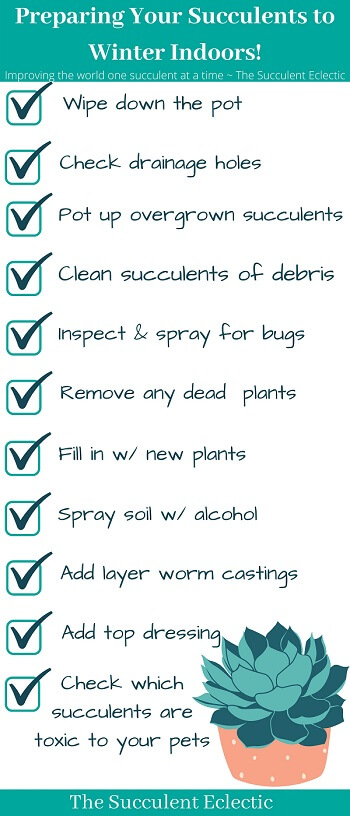
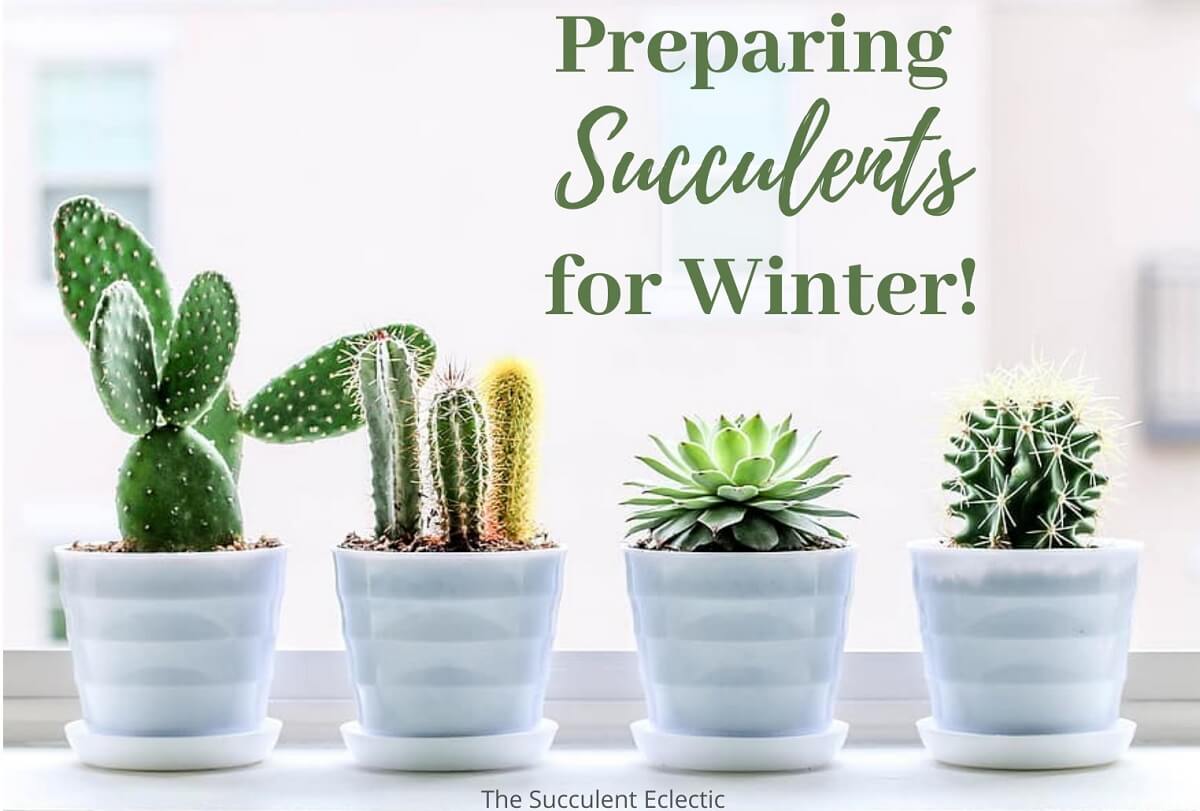


![Read more about the article How Much Light do Succulents Need? + [Infographic]](https://thesucculenteclectic.com/wp-content/uploads/2020/10/how-much-light-do-succulents-need-300x193.jpg)
Thank you for sharing this wonderful information because I forget really easy
Hi Shirley,
Thanks so much for letting me know you found this useful!
I know – there is just so much to remember. I’m going to try to make more infographics and checklists to help.
Happy gardening!
~Kat